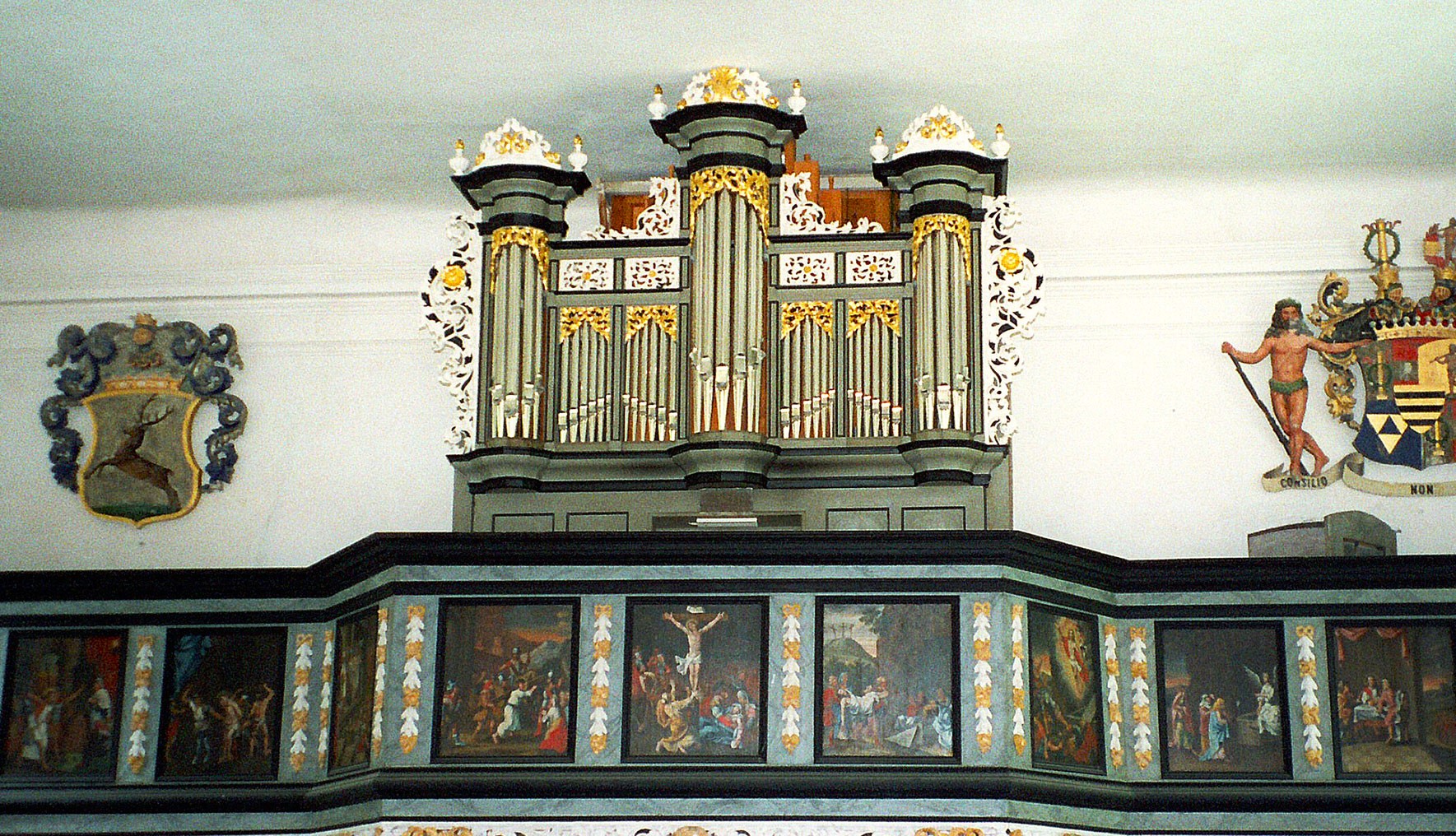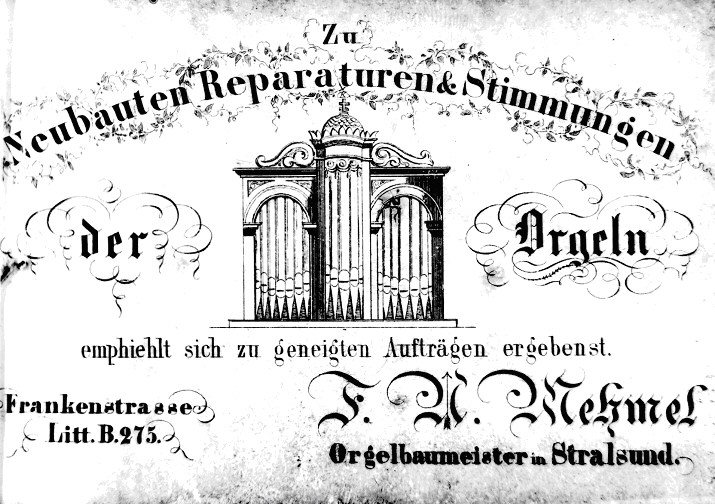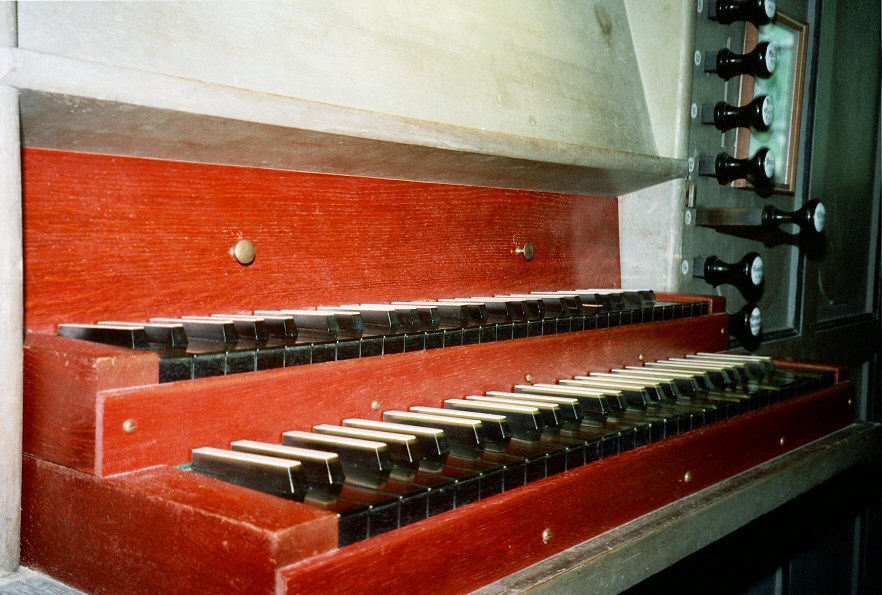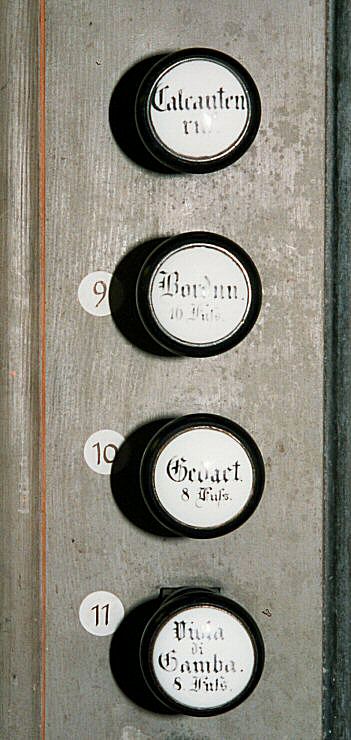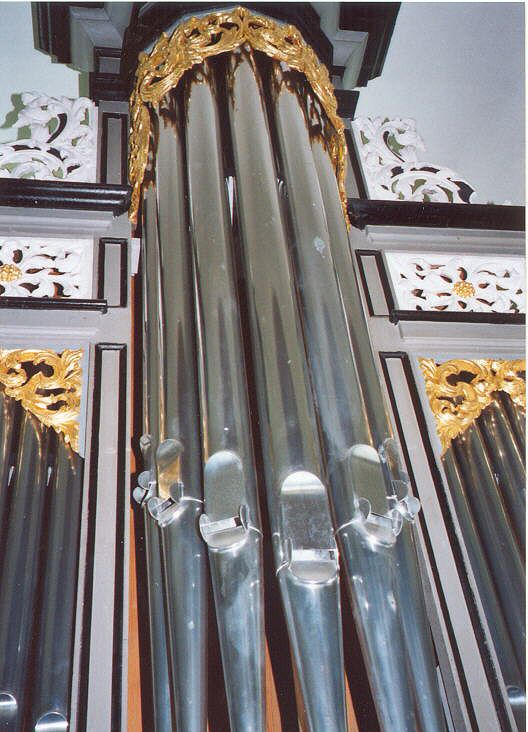Nehringen, St. Andreas
| Builder | F. A. D. Mehmel |
|---|---|
| Year | 1868 |
| Period/Style | Romantic |
| Stops | 13 |
| Keyboards | 2+P |
| Keyaction | tracker/mechanical |
| Tuning | Equal at 440 Hz |
| Sampleset |
Available
 , sampled by
OrganArt Media
, sampled by
OrganArt Media
|
The St. Andreas Church in Nehringen, Mecklenburg-Vorpommern, houses a significant piece of musical heritage—the 1868 F. A. Mehmel organ. This organ is set within the chapel originally built around 1350, with its current baroque appearance resulting from extensive renovations between 1721 and 1726 during the Swedish governance. The church's interior is richly decorated with large gallery paintings, a renaissance altar from 1598 featuring Italian marble reliefs, and various baroque elements like the pulpit and the patronage loge, contributing to its historical and artistic value. Notably, the church represents one of the last surviving ensembles of Swedish Baroque architecture in Vorpommern.
The Mehmel organ is a romantic-style slider chest organ, typical of village churches in the region during the 19th century, known for its warm foundational tones and strings like the Viola di Gamba and Geigenprincipal. Influenced by Cavaillé-Coll, it includes unique tonal qualities such as the Flauto amabile and a non-repeating mix called Progressio Harmonica, which allows for clear performances of Bach's works. The organ suffered from vandalism and neglect, leading to a non-functional state until its restoration in 1994 by Sauer Organ Builders, which involved reconstructing damaged pipes and those lost during World War I. The church now enjoys a revived community and cultural life, hosting regular concerts in a space with about 2.5 seconds of reverberation, further enhancing the organ's sound.
The Mehmel organ is a romantic-style slider chest organ, typical of village churches in the region during the 19th century, known for its warm foundational tones and strings like the Viola di Gamba and Geigenprincipal. Influenced by Cavaillé-Coll, it includes unique tonal qualities such as the Flauto amabile and a non-repeating mix called Progressio Harmonica, which allows for clear performances of Bach's works. The organ suffered from vandalism and neglect, leading to a non-functional state until its restoration in 1994 by Sauer Organ Builders, which involved reconstructing damaged pipes and those lost during World War I. The church now enjoys a revived community and cultural life, hosting regular concerts in a space with about 2.5 seconds of reverberation, further enhancing the organ's sound.
| Hauptwerk | Hinterwerk | Pedal |
|---|---|---|
| Bordun 16 | Geigenprincipal 8 | Subbass 16 |
| Gedact 8 | Flauto amabile 8 | Gedactbass 8 |
| Viola di Gamba 8 | Flauto amabile 4 | Violon 8 |
| Principal 8 | ||
| Octave 4 | ||
| Rohrflöte 4 | ||
| Progressio Harmonica 2-3 fach |
W.A.Mozart - Andante F-Dur KV611
0:00
0:00
BWV 568 - Praeludium G-dur
0:00
0:00
J. Brahms - Schmuecke dich
0:00
0:00
https://www.organartmedia.com/de/f-a-mehmel
 Pipe Organ Map
Pipe Organ Map